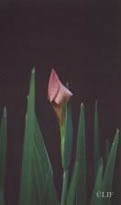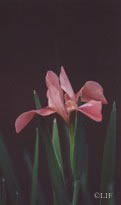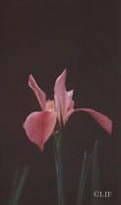Growing Irises in the MIDDLE ATLANTIC STATES
by Doris Simpson
|
|
|
|
The Middle Atlantic States Louisiana irises grow beautifully and bloom well in the Middle Atlantic States and particularly in the Baltimore area. In 1983 a fantastic display resulted. Following are the general conditions and recommended cultural procedures for this area; these procedures have been used for eight years and have given very gratifying results. Success has been so gratifying the growing area will be extended in the near future by planting in the black, loamy and sandy soil of the Eastern Shore (Accomack County, Virginia). A milder climate and high water table should give excellent performance. Baltimore is in plant hardiness zone 7. Winter temperatures seldom fall below 10-15°F (-13 to -15°C), while maximum summer temperatures as high as 95°F (35°C) can be expected. Annual rainfall is about 42 inches (105 cm.) and humidity is generally very high. Most of the rainfall occurs in the summer, May thru August. Although somewhat cooler in winter, rainfall, humidity and soil conditions are quite similar to south Louisiana. As might be expected there are problems in growing bearded irises, but Louisianas thrive. The duration of the growing season is about 7 months and bloom begins early in June. There is little or no growth in mid winter. The soil is naturally acid heavy clay loam. Louisiana irises love it. In earlier years an "acid bed" was prepared by digging out the existing soil and replacing it with a peat/manure mixture. The irises have outgrown this bed in all directions and seem stronger where they have grown into the pure clay. This may be due to the clay having better moisture retention in hot weather. Now humus is added to the clay but the soil is not replaced. This seems entirely adequate. A location in full sun provides the best growth and bloom. Some afternoon shade is always beneficial to prevent excessive fading of the blooms. As long as the irises have enough water and fertilizer they seem able to compete with medium size shrubbery. It is best not to try to grow them close to large trees and shrubs. New beds should be prepared three or four weeks before planting. Irises are generally received from growers in late summer. If irises are to be dug and replanted, they should be replanted the same day and then kept moist. Irises should be kept out of the ground the minimum possible time. August thru September is considered the best planting and transplanting time. October planting may be tricky. Frost may occur as early as October 1, and freezing weather may occur by the third week in October. In such cases the irises may not establish adequate root growth before very cold weather and could be lost. Sometimes they can be transplanted in mid to late July if it is not too hot. They should never be moved in very hot weather. The irises are planted 12-18 inches (30-45 cm.) or more apart if space is available. Plantings may be left 2-4 years before replanting. About 2-3 inches (5-8 cm.) of peat and compost mulch is maintained over the rhizomes during the growing season. This also adds acidity to the soil. A 6-8 inch (15-20 cm.) mulch of dry oak leaves and/or spine straw is added when really cold weather comes. This winter mulch is removed in the spring, the plants drenched with "Cygon" and a summer mulch of 1-3 inches (3-8 cm.) is put on. A compost mulch with manure is added in the spring after the winter mulch is removed. This serves as both a mulch and a fertilizer. About six weeks before bloom an acid fertilizer (azalea-camellia fertilizer or superphosphate) is used according to directions. In early fall a fast working liquid fertilizer is applied. Additional manure may be applied in the fall. This is a heavy fertilizing schedule. As in other cold growing areas characterized by a shortened growing season, the heavy fertilizing schedule seems to be a key to success with Louisiana irises. It is necessary to keep the irises green during the entire growing season. Special attention must be given to watering in the spring and fall. The more water the more growth. At times, especially when establishing a new planting or during a severe drought, it may be necessary to water every day. This is primarily to keep the irises from going completely dormant during very hot weather. In the Baltimore area the iris borer is the most serious and potentially damaging problem. Control of the borer is achieved by a "Cygon" drench in October and again when the winter mulch is removed in April. Good garden hygiene is important. A "search and destroy" regimen is followed after the treatments with "Cygon". Old stalks are removed and the bed kept as neat as possible after flowering. Old foliage is cut back in the spring and yellowing leaves are removed as they occur. There has been no problem with leaf spot. |



